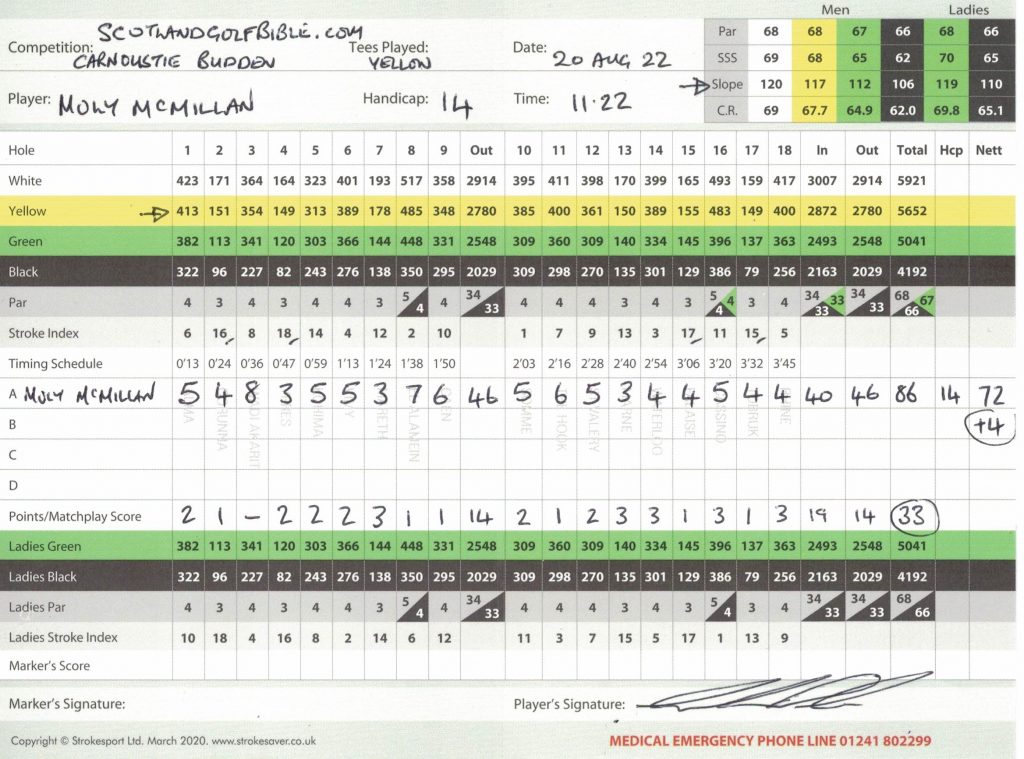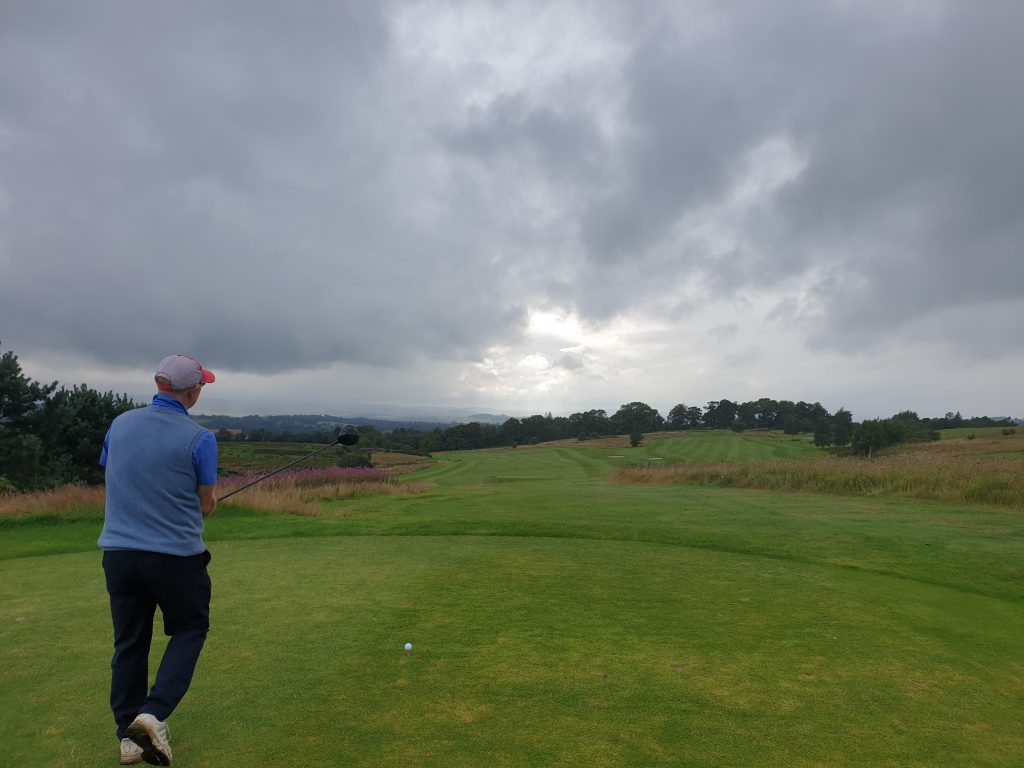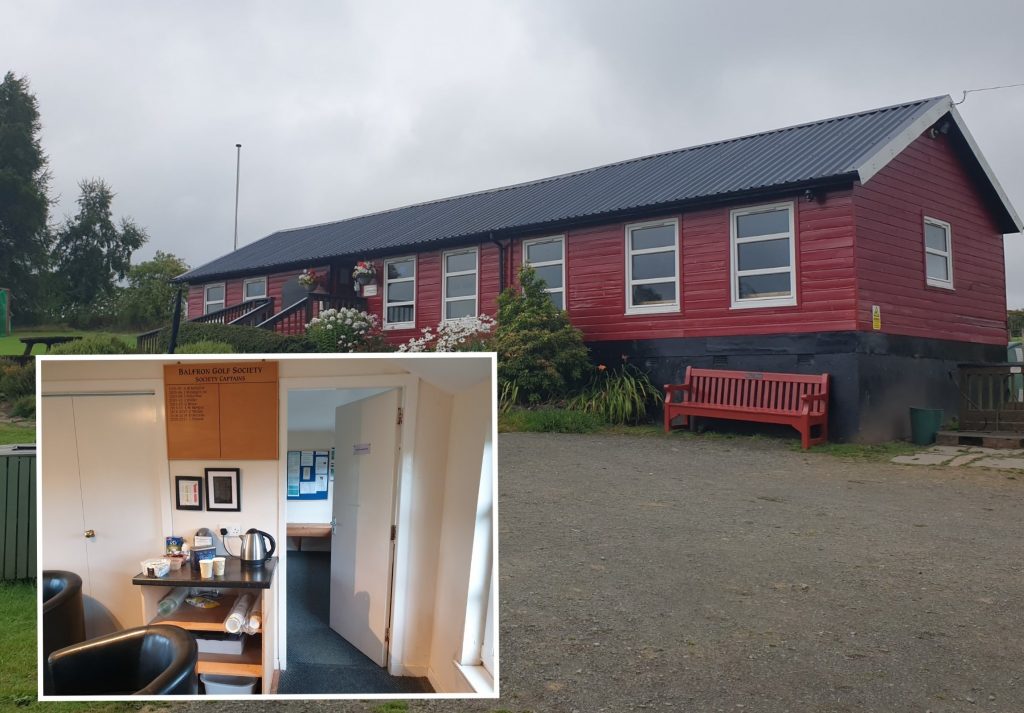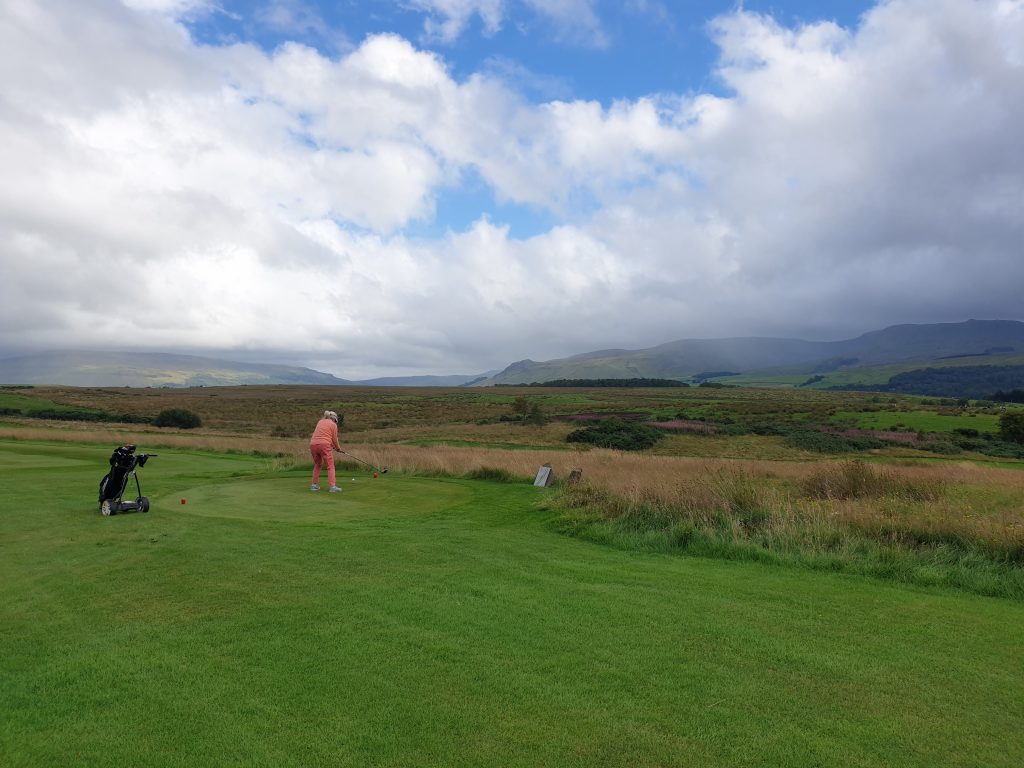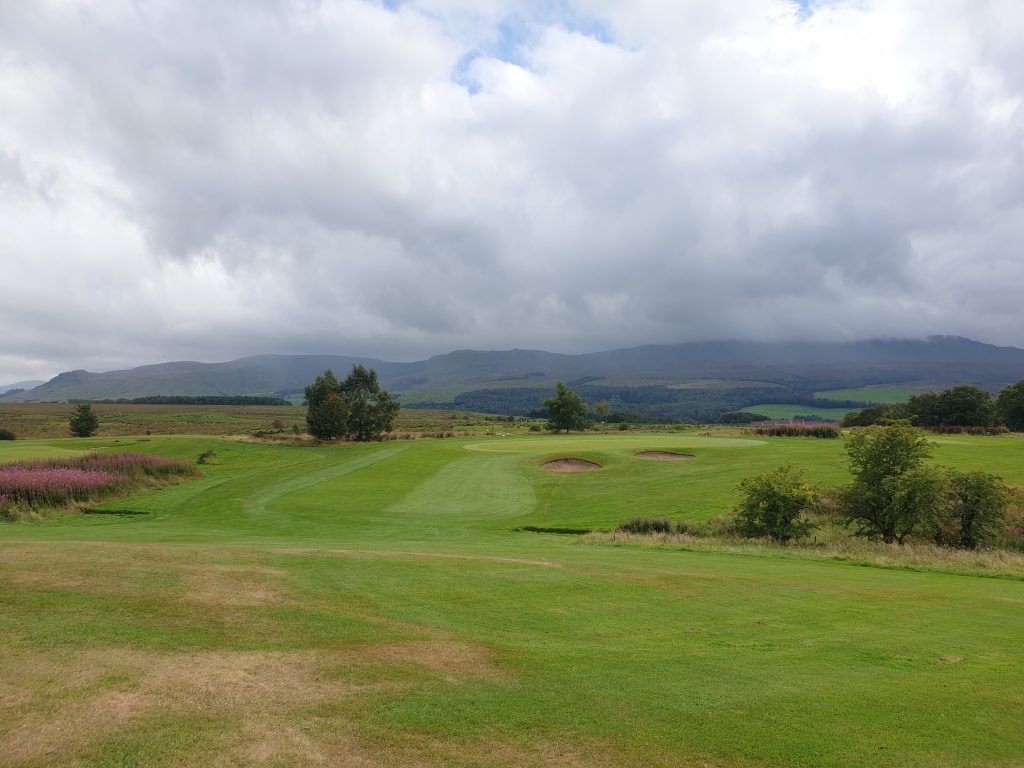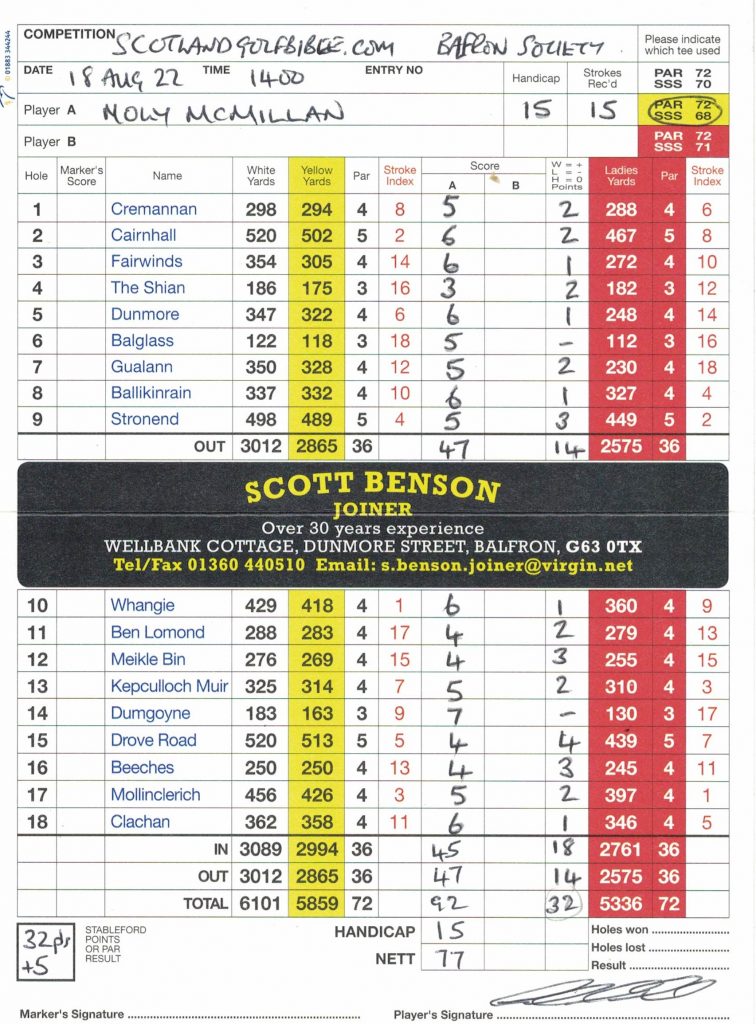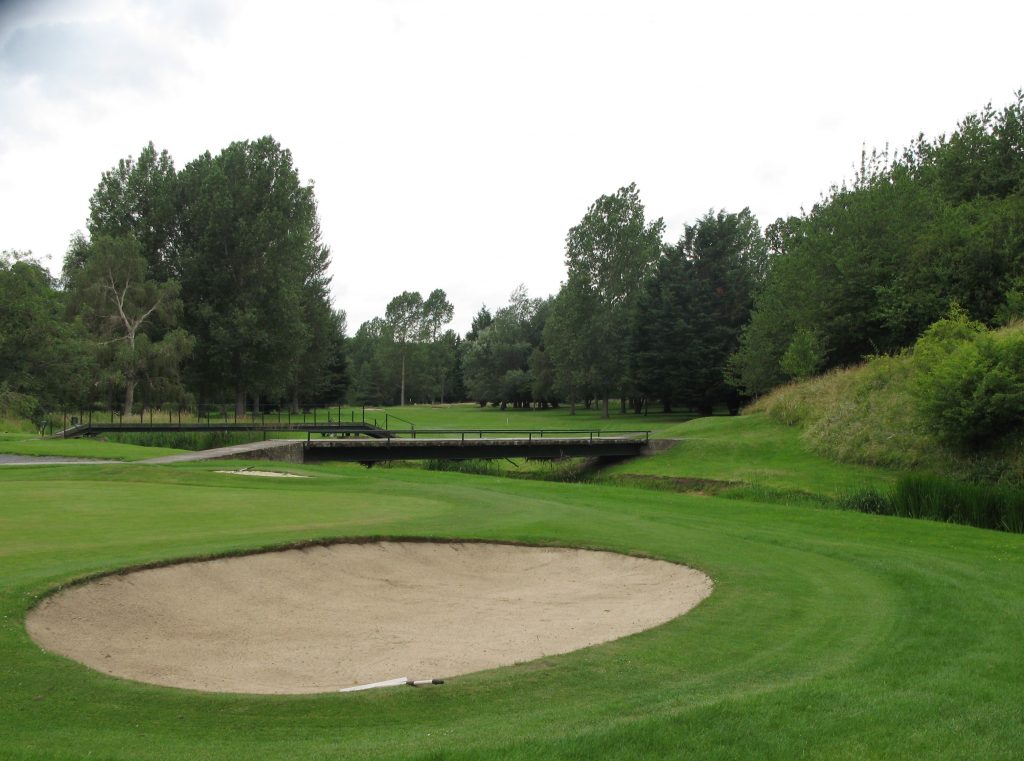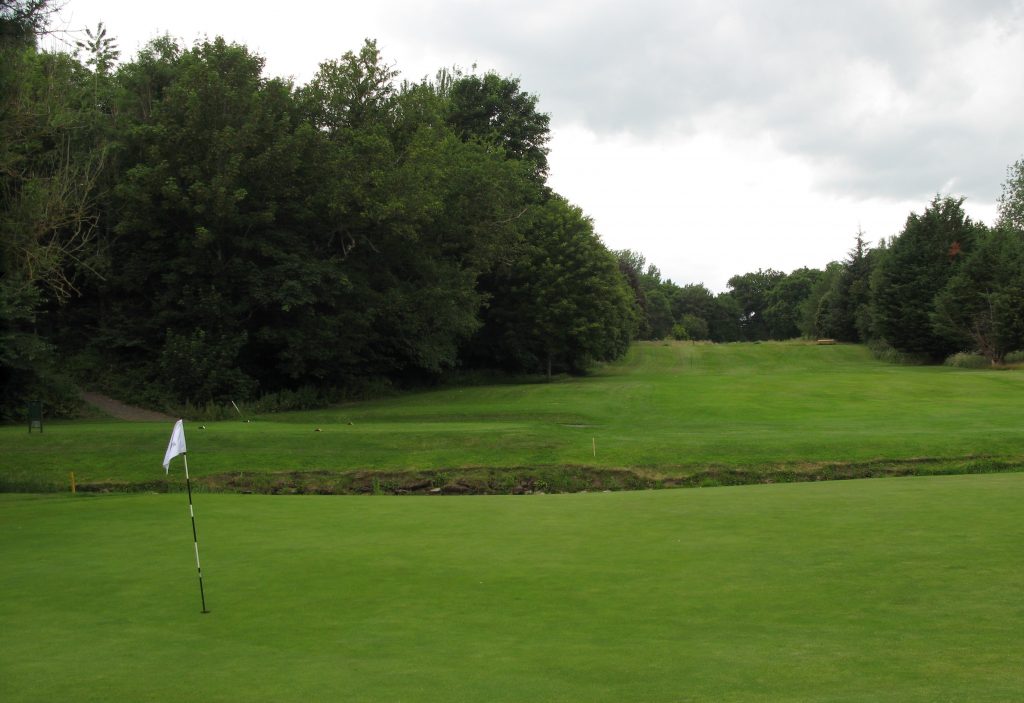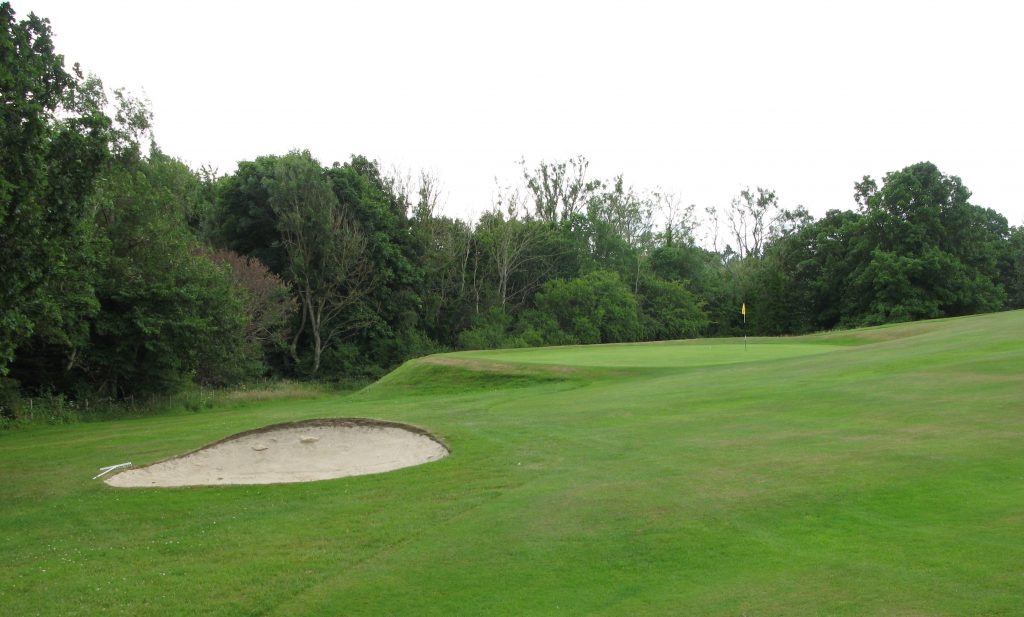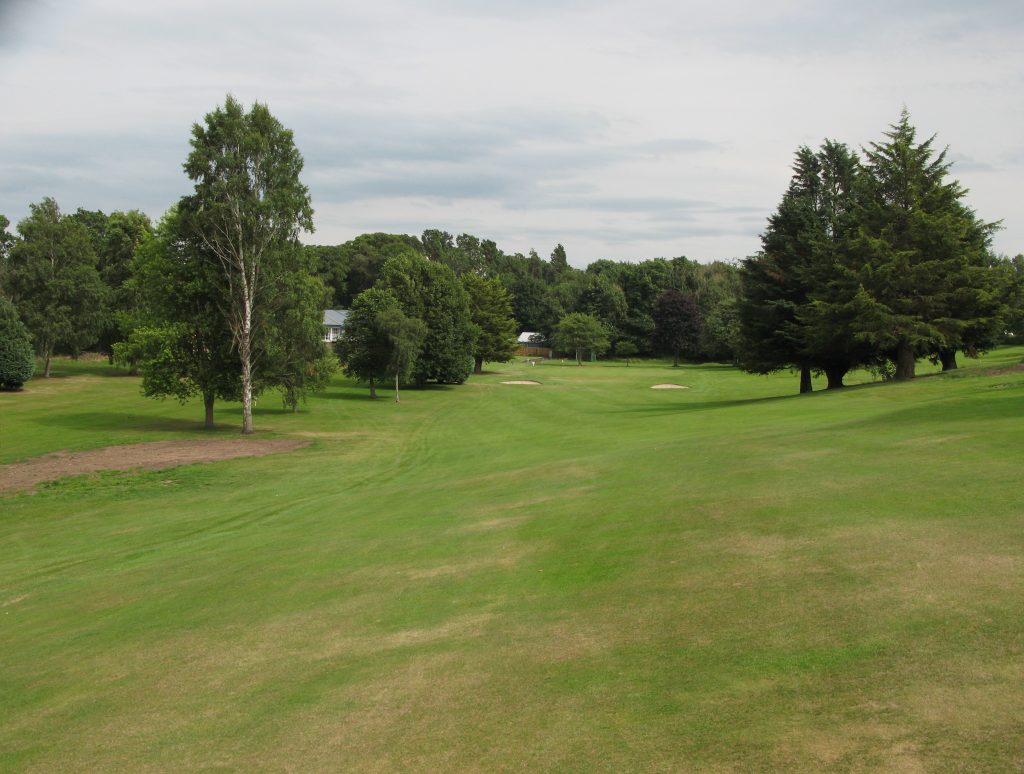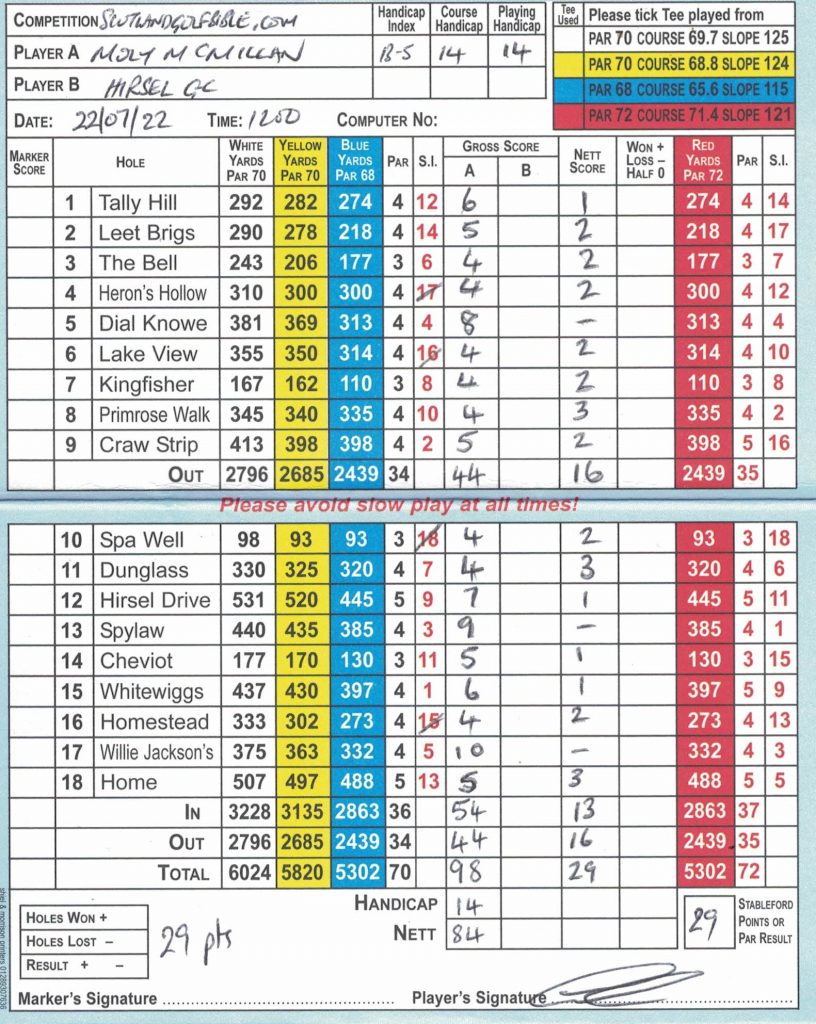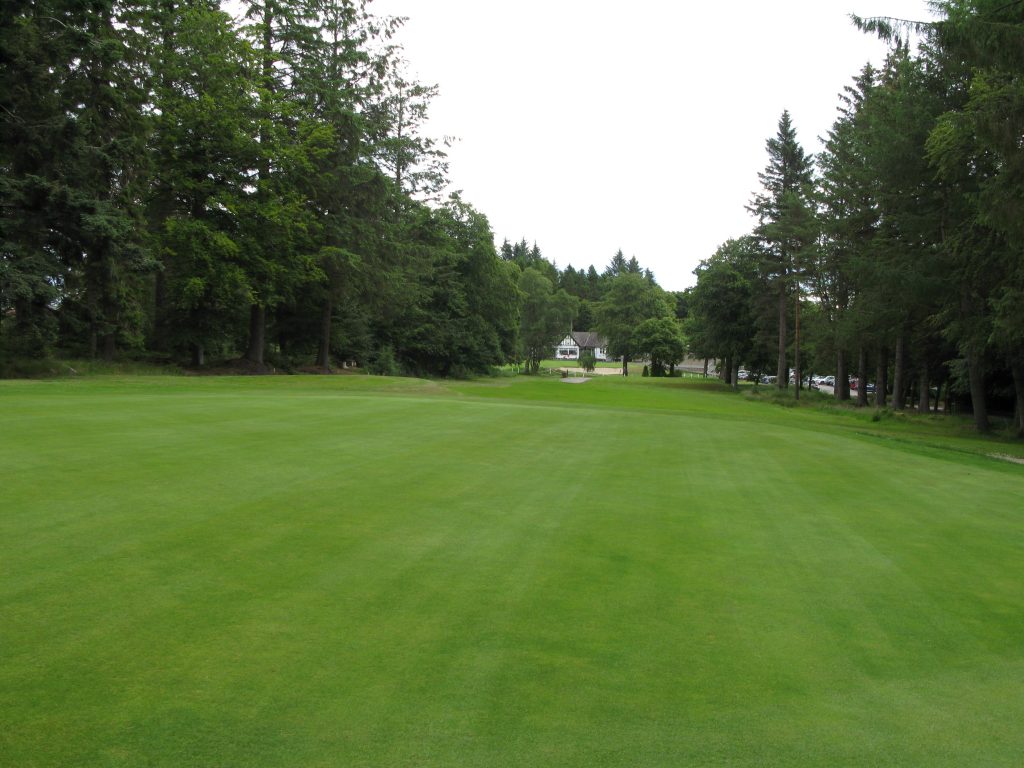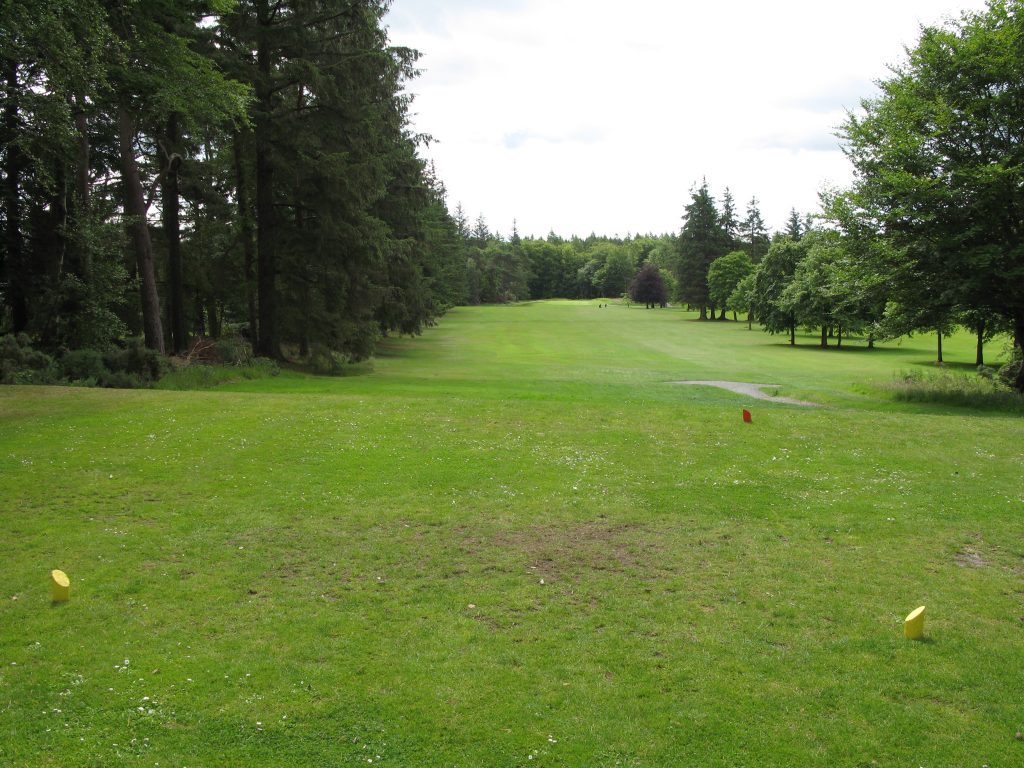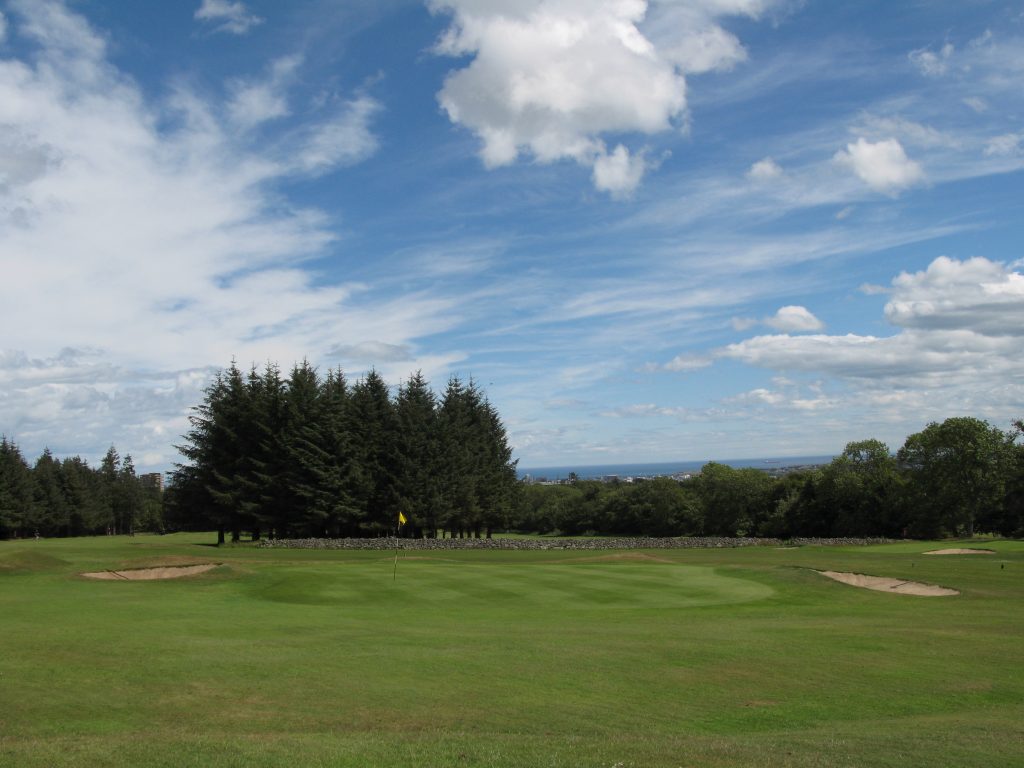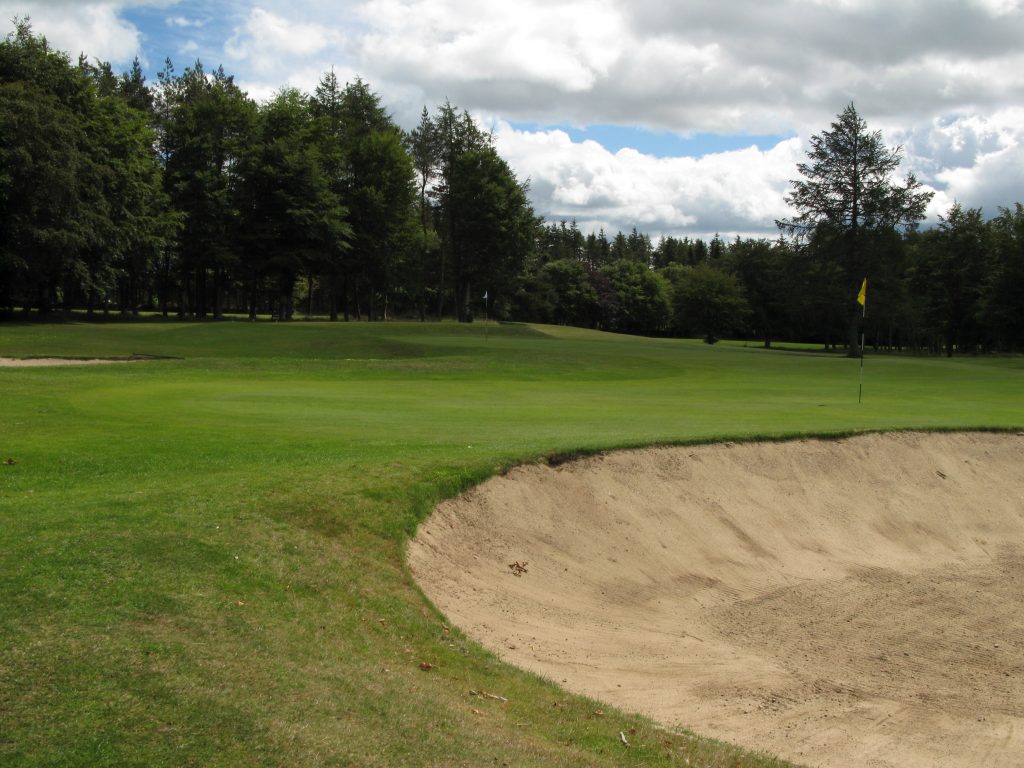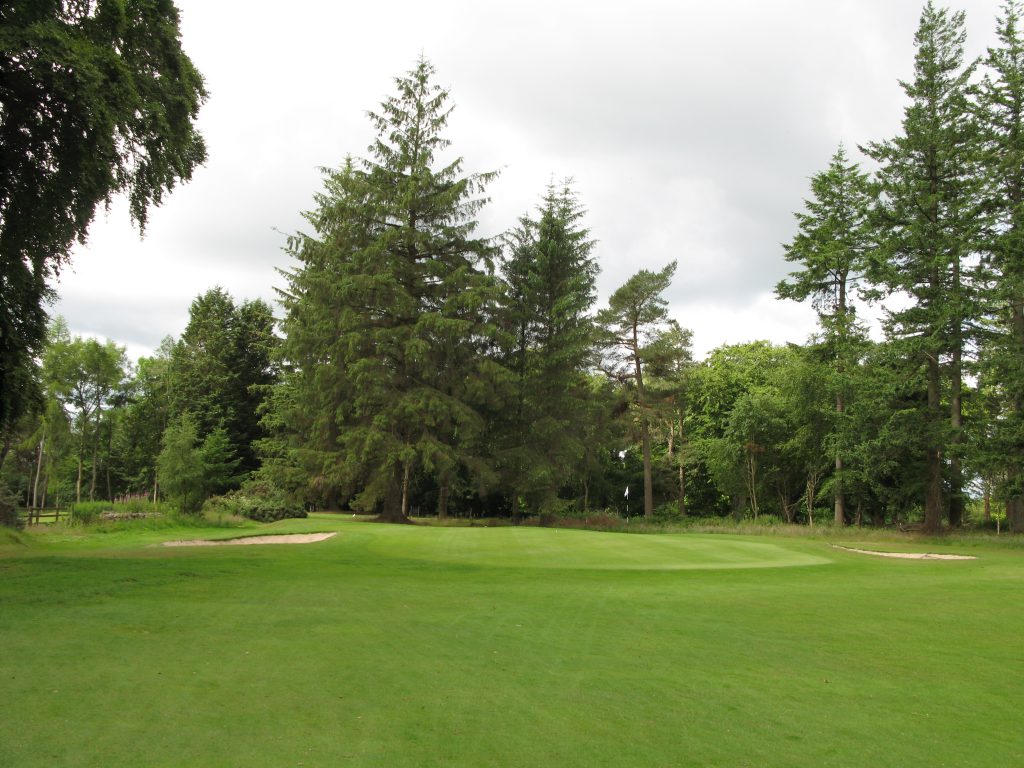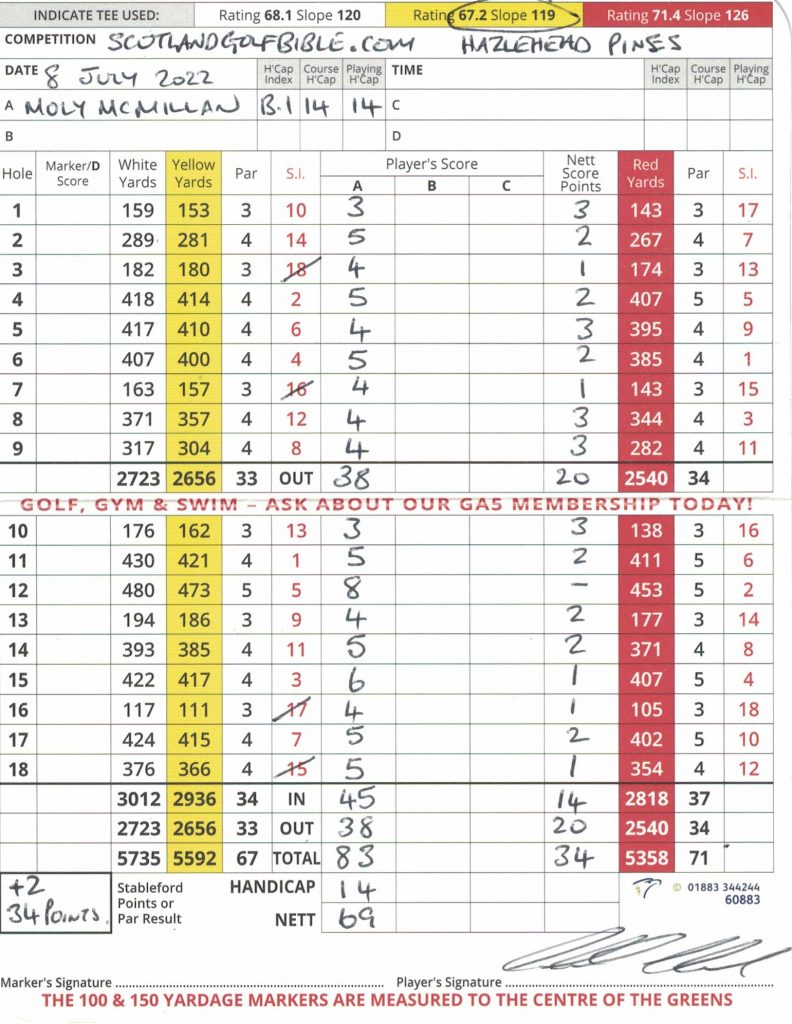With top quality greenkeeping this is the best option for mid to high handicap golfers at Carnoustie.
Round £75. Par 68. Course Rating / Slope Rating (yellow) 67.7/117. Value (out of 5) – 3.5
Barry Buddon is a 2,300 acre peninsular between Monifieth and Carnoustie. Used as a military training area since 1850, the Scottish comedian, Billy Connelly, wrote his “weekend soldier” song based on his territorial army experiences here.
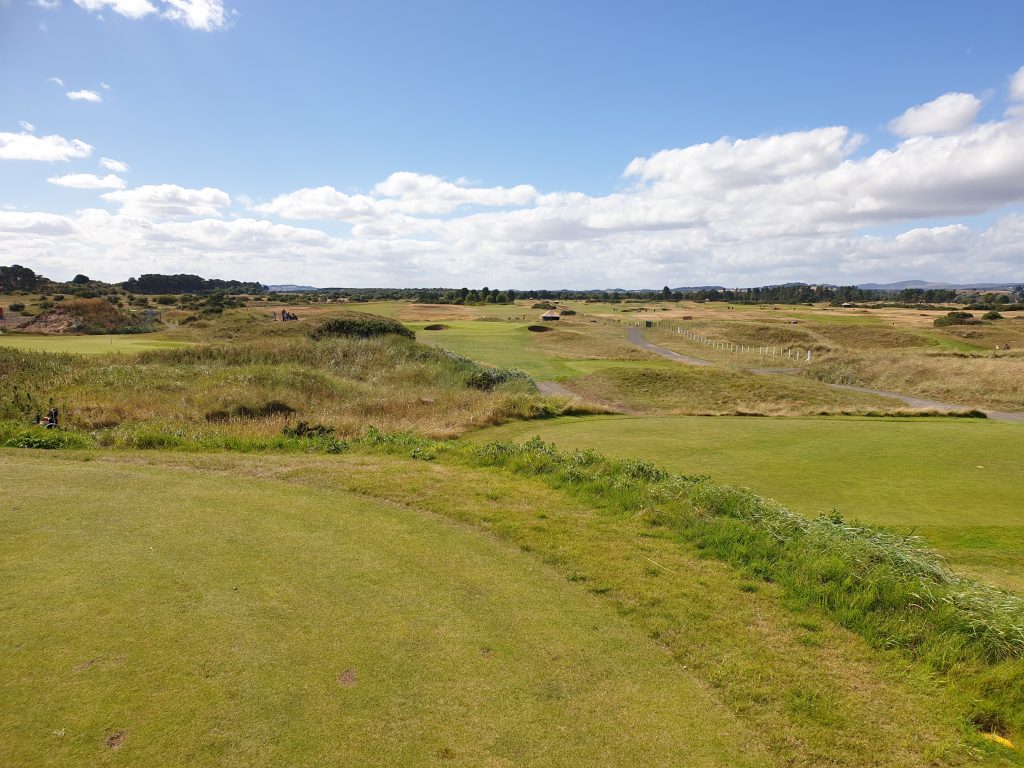
‘The Buddon’ is the youngest of the three Carnoustie courses. Designed by prolific golfers turned architects Peter Alliss and Dave Thomas, it was built on land previously used for military training and opened in 1981. The army range, immediately adjacent the course, is still operational, so it’s not uncommon to hear gunshots as you play. Recognising the neighbouring heritage, the holes are named after battles with the stone memorials on each tee well worth reading.
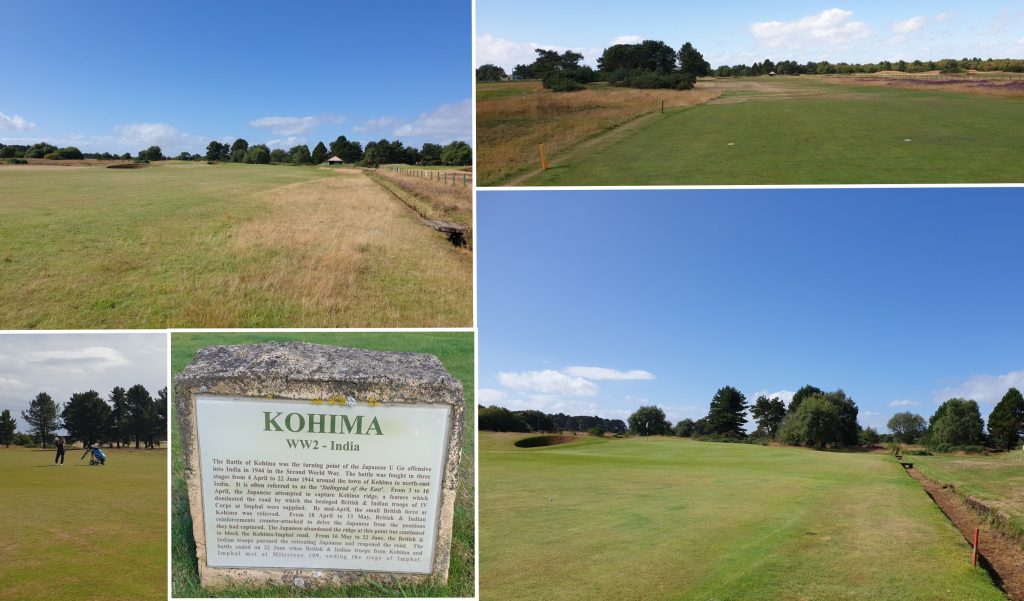
I therefore couldn’t help thinking about Billy Connelly as I played The Buddon, especially around holes 11 through 13, those closest to the military range. You might be playing exactly where Connelly lay in his camouflage dreaming up lyrics – it was during those weekend soldiering visits that Billy made his first public appearance in the Stag’s Head pub in Carnoustie in July 1962.
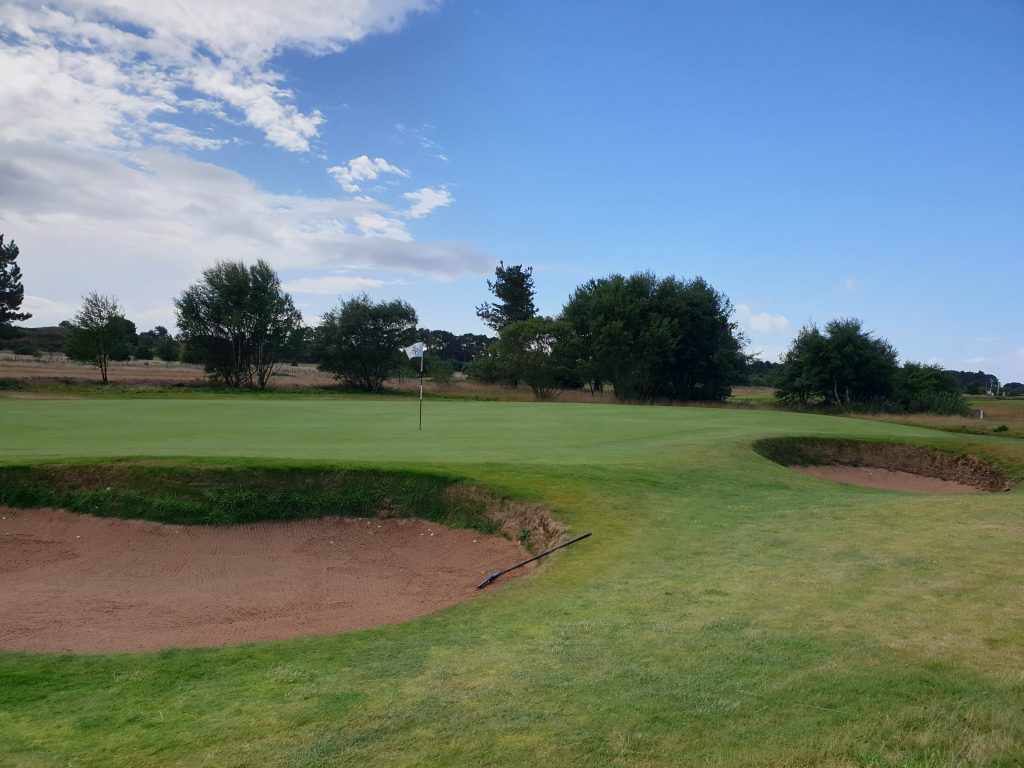
Holes 2 to 5 run beside the Championship course and you clearly see you’re playing the same turf, the same immaculately contoured bunkers, the same rough – only The Buddon is much shorter. At a quarter of the price though of the main course, but with the same greenkeeping quality, you wonder why people put themselves through the potential torment of the ‘Carnastie’ layout. When I get asked “How difficult is Carnoustie?”, I tell them about a 7 handicap member, who’s never broken 80.
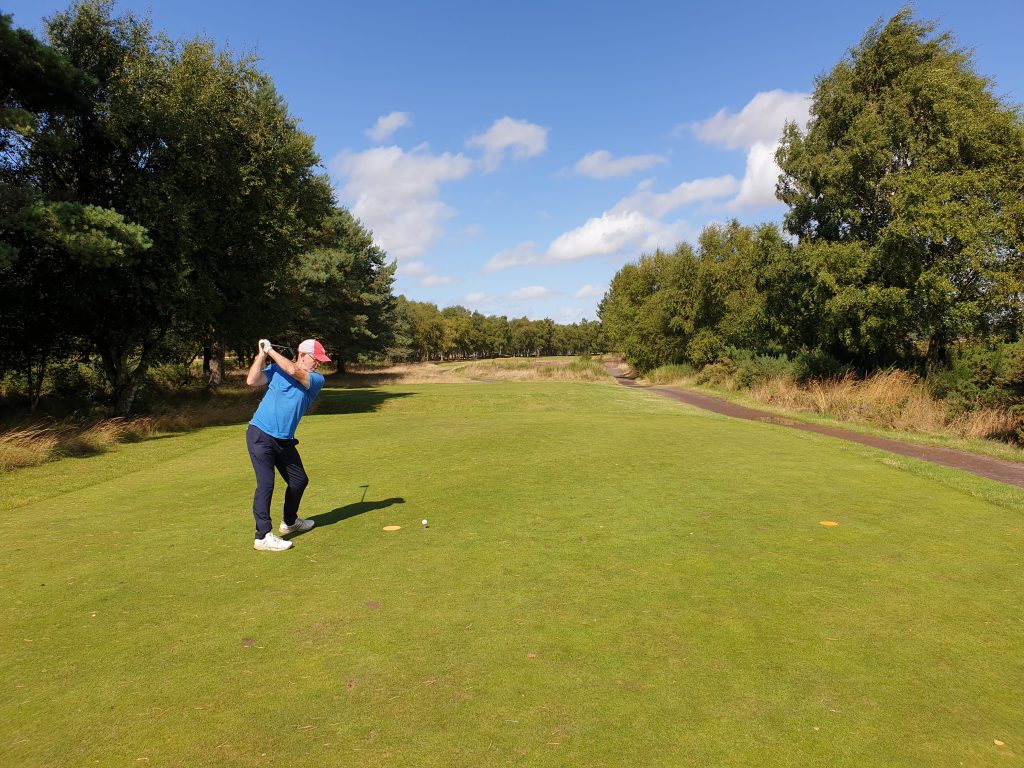
The Buddon, on the other hand, at under 6,000 yards, offers great variety and the better opportunity to play to your handicap. I scored 86 (33 stableford points) despite winds gusting up to 40 mph. Many of the holes (6 through 16) are routed through trees, and have a distinctive heathland feel. Throw in the views towards the Sidlaws Hills and it could be the highlands. It’s consequently a great venue to discuss what constitutes a “true links”?
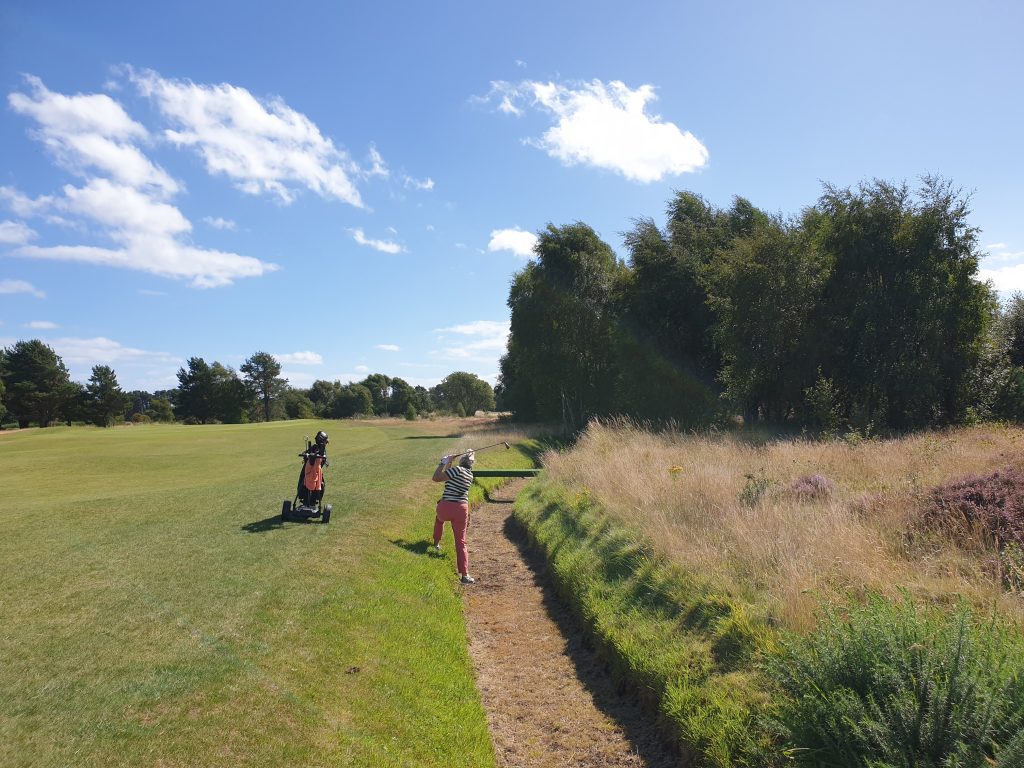
Without the Barry Burn in play, Alliss and Thomas have made good use of man made ditches to create the same hazardous feel, albeit you can play out of the ditches. The course is generally an “out and back” layout, so the south-westerly prevailing wind is a big challenge, especially on the first 5, where OOB on the right (the boundary with the Championship course) comes into play. This was my own undoing on the third, where I hit the fairway, but on the wrong course!
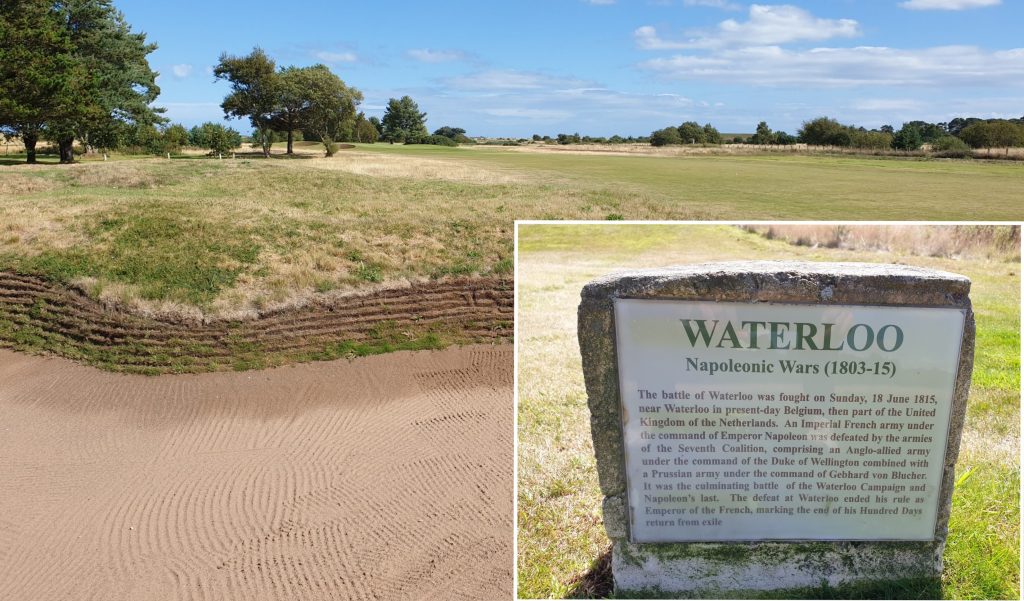
The course was in excellent condition when Fran and I played along with our host, family member Greg Kemp. The 16th was undergoing a new tee construction, but still in play from a forward mat. The greens are large and were a delight to putt on. On the day, we all played pretty well.
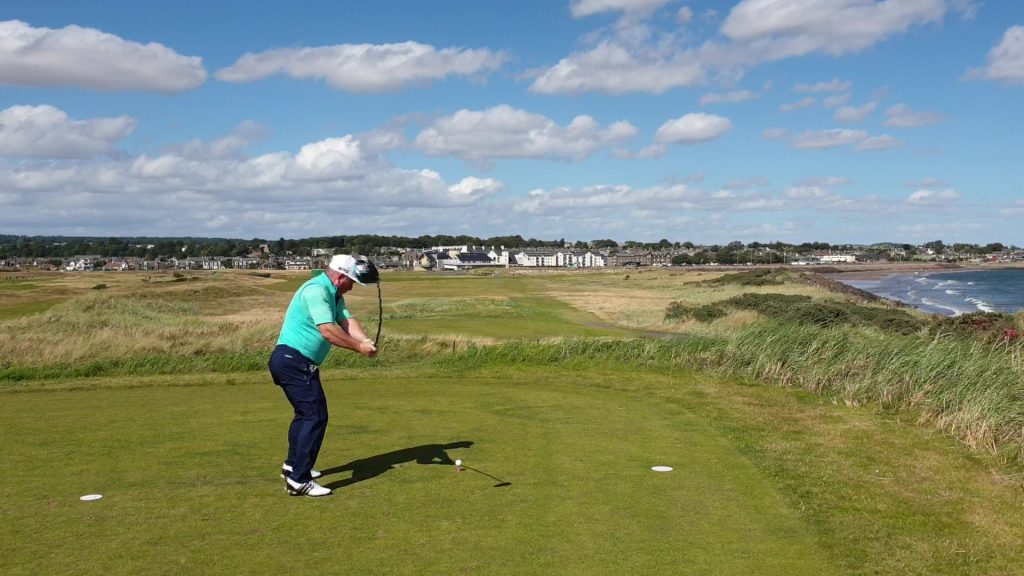
Of the two ‘secondary’ courses at Carnoustie, there’s little to choose from in determining which I would recommend. The Burnside has more history and is a truer links course, whereas The Buddon has more variety and is better designed. If it’s a windy day, go for The Buddon, because at least the trees give you some respite.
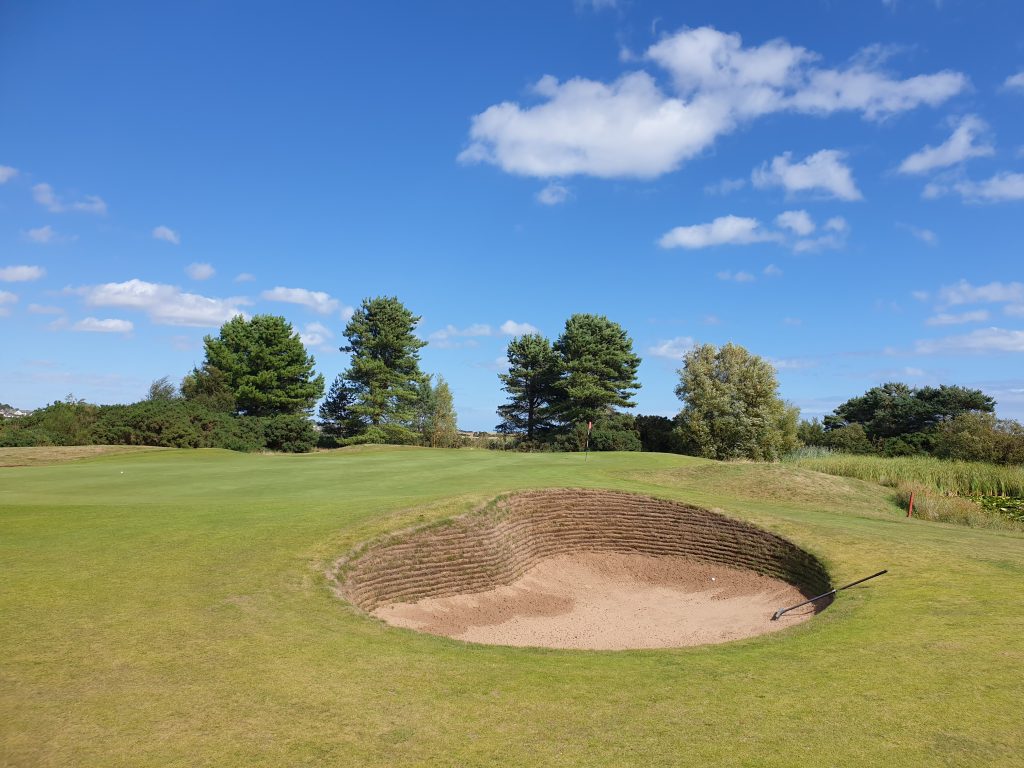
As to value, its a case of 3.5 for me, as the price of £75 is inflated due to its Carnoustie Championship companion. Having said that, if you ‘need’ to play on Carnoustie, this is probably the best option if you’re not single figures.
Facts:
Course Type: Links
Par 68 (2 par 5s, 10 par 4s, 6 par 3s)
Distance (yellow): 5652 yards
Moly’s Gross score: 86
